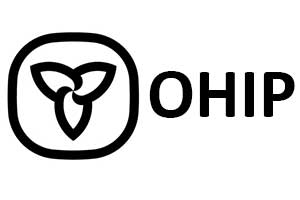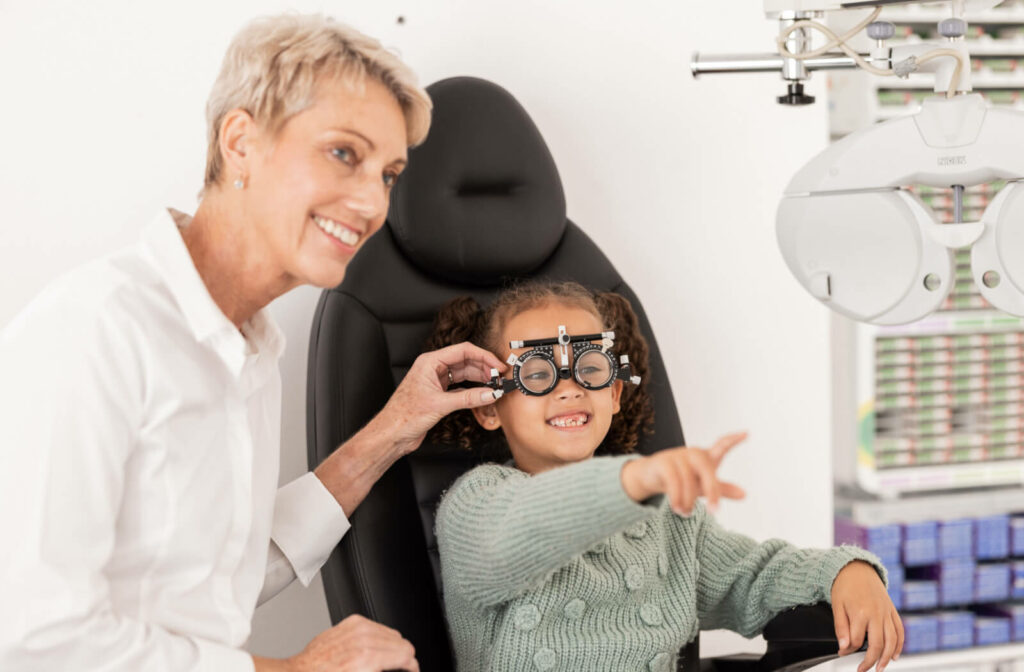Does Ohip Cover Eye Exams in 2024? Here Is Your Answer

Eye exams involve a comprehensive assessment of visual acuity, eye health, and prescription needs, typically conducted by an optometrist or ophthalmologist. The answer of your question Does OHIP Cover Eye Exams In Ontario is yes, OHIP covers eye exams for individuals under 20 and over 65 every 12 months. For those aged 20-64, coverage is only for specific medical conditions.

Understanding health coverage is crucial for maintaining eye health without incurring unexpected expenses. The Ontario Health Insurance Plan (OHIP) partially covers eye exams, offering peace of mind to eligible demographics. This includes free yearly exams for seniors and children, ensuring these vulnerable groups have access to necessary vision care.
Meanwhile, adults between the ages of 20 and 64 should check their eligibility, as OHIP extends its coverage to them only under certain medical circumstances. Staying informed about OHIP’s parameters can help Ontario residents plan effectively for their eye care needs and avoid out-of-pocket costs for routine checks. Regular eye exams are essential for early detection of vision problems, making it important to understand and utilize the coverage provided by OHIP.

Credit: stoneycreekoptometry.com
Introduction To Ohip And Vision Care
The Ontario Health Insurance Plan (OHIP) provides residents with access to a wide range of health services. However, when it comes to vision care, understanding what’s covered can be a bit like trying to see through a fogged-up lens. In this introduction, we’ll clear the air around OHIP and its coverage for eye exams, ensuring you know exactly what vision care benefits you are entitled to.
Exploring The Basics Of Ohip Coverage
OHIP stands as a fundamental pillar in the Canadian healthcare system, offering coverage to Ontario residents for many essential medical services. As for vision care, coverage can differ based on age, medical history, and other specific circumstances. It’s essential to delve into the details to determine what services you may be eligible for.
Understanding The Importance Of Routine Eye Exams
Keeping up with routine eye exams goes beyond just updating your glasses or contact lens prescription. These exams are a critical component of preventive health care. They can help detect vision issues that, if left unchecked, may result in irreversible damage. Moreover, eye exams can unveil early signs of systemic conditions like diabetes or high blood pressure, making them an indispensable tool for maintaining overall health.

Credit: myeyewellness.com
Eligibility Criteria For Ohip Coverage Of Eye Exams
Understanding the Ontario Health Insurance Plan (OHIP) coverage for eye exams is crucial to ensure you and your family maintain optimal eye health. In this section, we’re going to unravel the eligibility criteria for OHIP-covered eye examinations and help you determine if you can utilize these benefits.
Age-based Eligibility: Children And Seniors
OHIP prioritizes preventative care for both ends of the age spectrum – children and seniors. Here’s a breakdown of how age affects eligibility:
- Children: If you are 19 years or younger, you can breathe easy knowing that an annual eye examination is covered once every 12 months plus anytime that is medically necessary.
- Seniors: For those aged 65 and above, the importance of regular eye health checks is recognized with the provision of one complete eye exam every 12 months.
Special Circumstances: Medical Conditions And Treatments
OHIP coverage extends to individuals with specific medical conditions or those undergoing particular treatments. These cases include:
| Medical Condition/Treatment | Coverage Details |
|---|---|
| Diabetes Mellitus | Covered eye exams once every 12 months |
| Glaucoma | Covered eye exams as recommended by an optometrist or ophthalmologist |
| Cataract | Annual eye exams to monitor the condition |
| Retinal disease | Coverage based on medically necessary frequency |
| Visual field defects | Exams covered as needed |
| Corneal disease | Regular exams for condition assessment and management |
Frequency Of Coverage: Limitations And Exceptions
Familiarize yourself with the frequency limitations for OHIP-covered eye exams:
- Standard coverage for children and seniors allows for one complete eye exam per year.
- Those with specific medical conditions may be eligible for more frequent exams based on the condition’s severity and the attending professional’s advice.
- Exceptions can be made, and additional exams may be covered if deemed medically necessary.
Note: Coverage outside these parameters often requires payment out-of-pocket or through a supplementary insurance policy.
Ohip Coverage For Eye Exams: Gaps And Supplementary Insurance Options
The Ontario Health Insurance Plan (OHIP) offers a measure of relief when it comes to health-related expenses, but when it comes to eye health, understanding the full scope of coverage is essential. While some individuals qualify for eye exam coverage, there are notable gaps that could leave many paying out-of-pocket. Fortunately, supplementary insurance options are available to bridge these gaps. In this section, we delve into the specifics of what OHIP covers, what it doesn’t, and how to manage the costs associated with maintaining optimal vision health.
Identifying The Gaps: What Ohip Does Not Cover
OHIP provides eye exam coverage for specific age groups and medical conditions. However, the majority of adults between the ages of 20 and 64 without underlying medical issues find themselves excluded from this benefit. The gaps in coverage include:
- Routine eye exams for adults ages 20-64
- Additional tests such as contact lens fittings
- Advanced screening procedures not deemed medically necessary
Private Insurance And Vision Benefits
To mitigate the costs not covered by OHIP, many turn to private health insurance plans. These plans often include vision benefits that cover a range of services:
| Benefit | Description |
|---|---|
| Annual eye exams | One routine eye exam per year |
| Lenses and Frames | Allowance for glasses or contact lenses |
| Laser eye surgery | Partial or full coverage for corrective procedures |
Exploring different private insurance plans provides an opportunity to find a coverage option that aligns with your specific eye care needs.
Navigating Out-of-pocket Costs And Community Programs
When private insurance isn’t an option, managing out-of-pocket costs becomes crucial. Simple strategies such as shopping for competitive pricing on eye exams and seeking promotions for glasses or contact lenses can offer savings. Additionally, various community programs offer affordable vision care for those who qualify:
- Local health department initiatives
- Non-profit organizations providing vision care assistance
- University-affiliated clinics offering services at reduced rates
Researching these programs can lead to substantial savings and ensure that maintaining eye health doesn’t become a financial burden.

Credit: www.kawartha411.ca
Advocating For Eye Health: Push For Expanded Coverage
Eye health, an often overlooked aspect of overall well-being, necessitates vigilant attention and care. In Ontario, the Ontario Health Insurance Plan (OHIP) does provide coverage for some eye care services, but restrictions apply. Coverage is often limited by age, medical condition, or other factors, leaving a critical gap in care for many individuals. Advocacy for expanded coverage has hence become a clarion call, spearheaded by groups who understand the profound implications vision care can have on quality of life. This section delves into the vital role advocacy groups play in promoting comprehensive eye care, and the potential ripple effects policy changes might have on the health of our eyes—and our society.
The Role Of Advocacy Groups In Promoting Eye Care
Advocacy groups serve as influential voices championing the cause of universal eye health. These organizations work tirelessly to raise awareness among the public and policymakers about the importance of regular eye exams and the need for more inclusive OHIP coverage. They employ various strategies to further their mission:
- Public Education Campaigns: To inform about the risks of neglecting eye health and the benefits of preventive care.
- Research and Reporting: Providing data to support the need for broader coverage.
- Lobbying Efforts: Engaging with government officials to advocate policy reform.
- Community Outreach: Partnering with healthcare providers to identify and address local eye care needs.
Through these efforts, advocacy groups aim to shape a future where quality eye care is accessible to all.
Potential Implications Of Policy Changes On Eye Health
Changes in policy regarding OHIP coverage for eye exams can have far-reaching implications. Expanding coverage could:
| Positive Impact | Broader Context |
|---|---|
| Enhanced Early Detection | Early identification of conditions like glaucoma and cataracts, leading to timely interventions. |
| Decreased Healthcare Costs | Preventive eye care can lead to reduced spending on more serious, costly medical interventions. |
| Improved Quality of Life | Better vision care can improve educational outcomes, productivity, and personal well-being. |
| Reduced Inequalities | Universal coverage aids in leveling the playing field for vulnerable populations. |
A broader insurance safety net may inspire a healthier, more productive community, underpinning the socioeconomic fabric of Ontario.
Frequently Asked Questions On Does Ohip Cover Eye Exams
Is Ohip Coverage Available For Eye Exams?
OHIP generally covers eye exams for specific age groups and medical conditions. Children 19 years and under, and seniors 65 and older, are eligible. Also, individuals with specific health issues may qualify for yearly covered exams.
How Often Does Ohip Cover Eye Exams?
OHIP covers comprehensive eye exams once every 12 months for children and seniors. For adults aged 20 to 64, coverage is usually for those with certain medical conditions affecting the eyes.
Are There Exceptions For Ohip Eye Exam Coverage?
Yes, coverage exceptions exist. OHIP may cover adults between the ages of 20 and 64 if they have certain eye diseases or health conditions, like diabetes or glaucoma, that necessitate regular eye care.
Can I Get An Eye Exam Covered If I’m Over 20?
For adults over 20 but under 65, OHIP usually covers exams if they have specific medical conditions. Otherwise, routine exams are generally not covered for this age group.
Conclusion
Navigating OHIP coverage for eye exams can seem daunting. Our post aimed to demystify what’s included and what’s not. Remember, eligibility often hinges on age, medical conditions, and other specified criteria. Always check with a healthcare provider for the most current information.
Protecting your vision starts with understanding your benefits. Stay informed and ensure your eyes receive the care they deserve.




